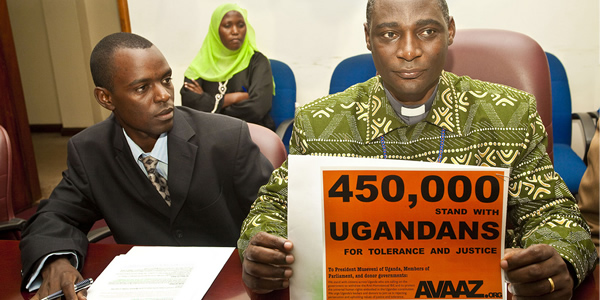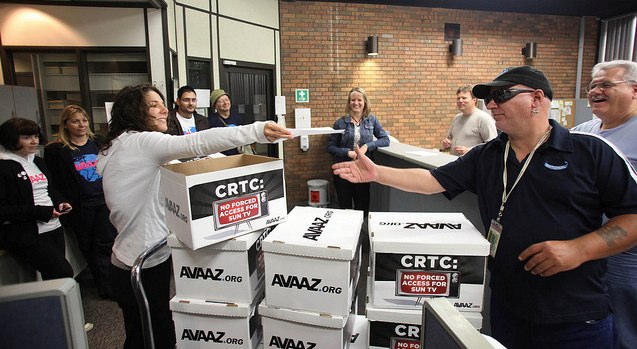Avaaz.org: Click for Change
These are harsh times. There’s an economical crisis and a climate crisis. There’s drought in the Horn of Africa and flooding in Thailand, chaos in Libya and war in Afghanistan, protests on Wall Street and censorship in China. If only there was an easy way to end it all..
There might be. And it’s very easy: you don’t have to leave the house, now you can change the world, fight the system and save the vulnerable while eating pizza and watching How I Met Your Mother. It’s called Avaaz.org. In 2007 they started, trying to “close the gap between the world we have and the world most people want, once campaign at a time”. That’s quite a challenge. But now, only four years later, they have a website with 10 million members from 193 countries, a core team working from 18 cities on five continents, thousands of volunteers and 15 million dollars in donations. That’s quite impressive. And to be honest, I had never heard of them until Reinder Rustema told be about the site during my interview with him last week. But there might be a few of you who also have never heard of them, that’s why I will devote my last mandatory blog post to this interesting movement.

So what is Avaaz.org? It’s e-petitions and activism made extremely simple. When you land on their well-designed website you can join any cause, usually on human rights, the environment or the economy, by filling out your e-mail address, a postal code and a (nick)name. That’s it, now you’ve officially ‘joined’ the movement and they’ll count you as a member. From now on, you’ll receive e-mails on causes deemed important by the site’s core team, and again you can join these new causes by a single click. And with another of those clicks you can spread the message throughout your own social network. With this simple method Avaaz has gathered over 10 million e-mail addresses and over 54 million ‘actions’ (clicks) over the last four years.
Now this so-called clicktivism (or the more demeaning slacktivism) has received a lot of criticism. No surprise, because this kind of protest is something totally different than the classic methods of activism. It sounds naïve and too-easy-to-be-true, tailor made for today’s lazy, social-media saturated youth who can now satisfy their personal quest for justice within mere seconds.
This critique comes from cynics like Mica White, who wrote in the Guardian last year:
“Political engagement becomes a matter of clicking a few links. In promoting the illusion that surfing the web can change the world, clicktivism is to activism as McDonalds is to a slow-cooked meal. It may look like food, but the life-giving nutrients are long gone.”
But I don’t think that’s a fair picture. Ofcourse, the majority of Avaaz users won’t go to a sit-in, get arrested by riot police or will every hold up a protest sign. But that doesn’t make Avaaz.org a failure. This is a organization that’s powerful by numbers. With 10 million e-mail addresses in their database a single e-mail becomes an effective tool. It’s the spam-principle: if only a single percent responds we’re still talking about 10,000 people.
And they do respond. According to their own site, Avaaz has received up to 15 million dollars in donations; not from companies or governments, but by small, online donations from their members. You can do a lot of protesting with a budget like that. For example, the’ve used the money to produce a major ad campaign against Rupert Murdoch or to donate videocameras to citizen journalist in Arab countries.

Sure, those results are probably slightly exaggerated, and Avaaz is usually combining efforts with other organizations, but these results do, at the least, legitimize their actions and their existence. According to their website and an article in The Guardian there’s a dedicated full-time staff team of 52 people worldwide who meticulously plan these international campaigns, supported by thousands of volunteers. They choose their ‘targets’ wisely and until now, that approach has paid off in several occasions.
And of course they won’t simply fix the major problems I started this post with, but it’s a lot better than giving up and doing nothing. At least they’re trying to combine new media and old school activism in a new and professional way.